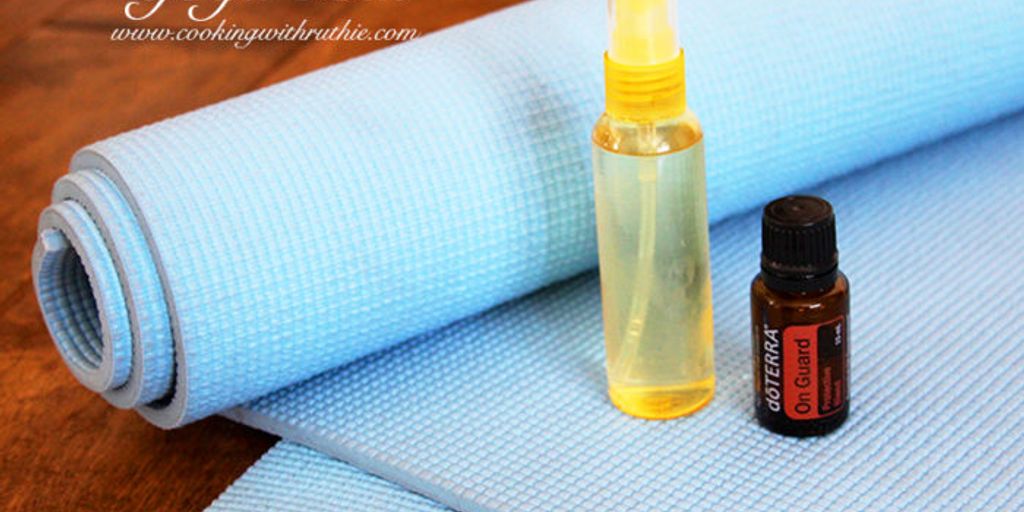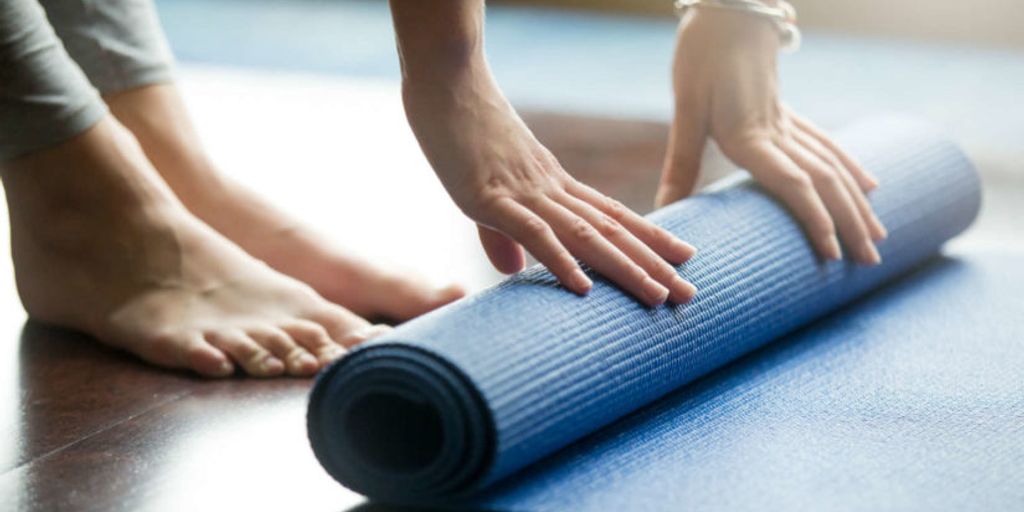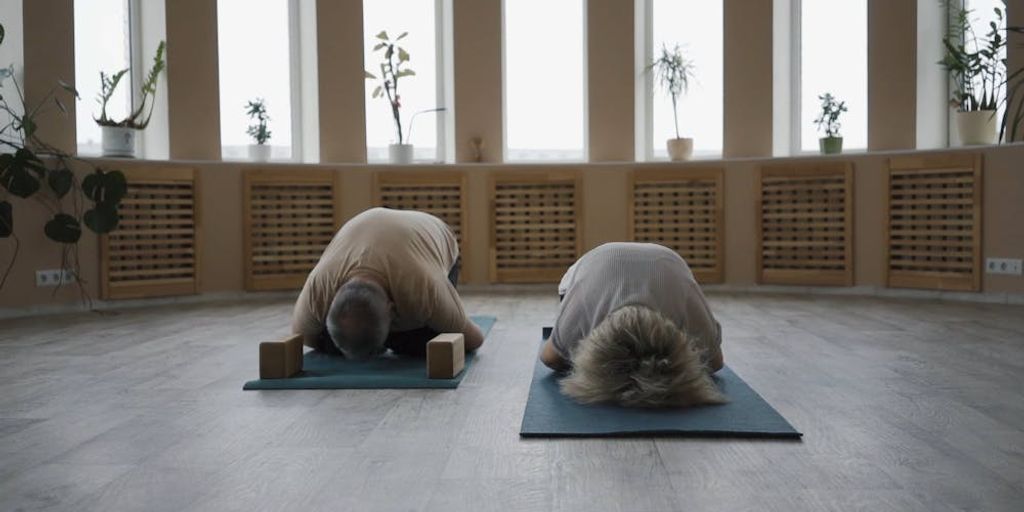
Choosing the Perfect Yoga Mat Dimensions for Your Practice
Choosing the right yoga mat dimensions is crucial for a comfortable and effective practice. Whether you're a beginner or an experienced yogi, understanding the various aspects of yoga mat sizes will help you make an informed decision. This article will guide you through the different dimensions, how your height influences your choice, and what to consider for different types of yoga. Additionally, we'll explore travel-friendly options, eco-friendly materials, budget considerations, and specialty mats for unique needs.
Key Takeaways
- Understanding the standard dimensions of yoga mats, including common lengths, widths, and thickness variations, is essential.
- Your height plays a significant role in determining the right yoga mat dimensions, with custom sizing options available for taller individuals.
- Different types of yoga may require different mat dimensions, such as those needed for Hatha, Vinyasa, and Restorative Yoga.
- Travel-friendly yoga mats should balance portability and comfort, with materials that are lightweight and easy to fold.
- Eco-friendly yoga mats offer sustainable material choices, and it's possible to find options that balance thickness with eco-friendliness.
Understanding Standard Yoga Mat Dimensions
When it comes to choosing the right yoga mat dimensions for your practice, understanding the standard sizes available is crucial. Yoga mats come in various lengths, widths, and thicknesses, each catering to different needs and preferences.
Common Lengths and Widths
The most common yoga mat length is 68 inches, which suits most practitioners. However, taller individuals might prefer mats that are 72 inches or even 84 inches long. Standard widths are typically 24 inches, providing ample space for most yoga poses.
Thickness Variations
Yoga mats vary in thickness, ranging from thin travel mats at 1/16 inch to thicker mats up to 1/4 inch. Thicker mats offer more cushioning, which can be beneficial for joint support, while thinner mats provide better stability and connection to the floor.
Material Considerations
The material of your yoga mat can affect its durability, grip, and eco-friendliness. Common materials include PVC, TPE, and natural rubber. Eco-conscious practitioners might opt for mats made from sustainable materials like natural rubber or jute.
Understanding these standard dimensions and material options will help you make an informed decision and enhance your yoga practice.
How Your Height Influences Yoga Mat Dimensions
Finding the Right Length
When selecting a yoga mat, your height plays a crucial role. Taller individuals often require longer mats to ensure they can comfortably perform all poses without their hands or feet hanging off the edges. A standard yoga mat is typically around 68 inches long, but if you're over 6 feet tall, you might want to consider mats that are 72 inches or longer.
Width Considerations for Taller Individuals
Width is another important factor, especially for taller yogis. While the standard width is 24 inches, those with broader shoulders or a larger frame might benefit from a mat that is 26 inches or wider. This extra width provides more stability and comfort during practice.
Custom Sizing Options
For those who find standard sizes inadequate, custom-sized mats are an excellent option. These mats can be tailored to your specific dimensions, ensuring you have the perfect fit for your practice. Custom mats can also address other needs, such as additional thickness for joint support or specific materials for better grip.
Choosing the right size yoga mat for your practice can significantly enhance your comfort and performance, making it easier to focus on your poses and breathing.
Yoga Mat Dimensions for Different Types of Yoga
Dimensions for Hatha Yoga
Hatha yoga typically involves slower movements and longer holds. A standard yoga mat with dimensions of 68 inches in length and 24 inches in width is usually sufficient. However, if you prefer more space, consider extra-wide mats for extra space.
Dimensions for Vinyasa and Flow Yoga
Vinyasa and flow yoga require more dynamic movements. A longer mat, around 72 to 74 inches, can be beneficial to accommodate the transitions between poses. Additionally, a mat with a good grip is essential to prevent slipping during practice.
Dimensions for Restorative Yoga
Restorative yoga focuses on relaxation and often uses props. A thicker mat, around 6mm to 8mm, provides additional cushioning for comfort. You might also want to consider size options that allow for the use of bolsters and blankets.
When choosing a yoga mat, always consider the type of yoga you practice to find your perfect fit.
Travel-Friendly Yoga Mat Dimensions
Compact and Foldable Options
When it comes to traveling with a yoga mat, compact and foldable options are essential. These mats are designed to be easily packed into a suitcase or backpack, making them ideal for yogis on the go. Look for mats that can be folded into a small square or rolled tightly without losing their shape.
Balancing Portability and Comfort
Balancing portability and comfort can be challenging, but it's crucial for a satisfying practice. While thinner mats are more portable, they may lack the cushioning needed for joint support. Consider a mat that offers a balance between thickness and weight, ensuring it provides enough comfort without being too bulky.
Materials for Lightweight Mats
The material of your yoga mat significantly impacts its weight and portability. TPE (Thermoplastic Elastomer) and natural rubber are popular choices for lightweight mats. These materials are not only light but also provide good grip and durability, making them perfect for travel.
Eco-Friendly Yoga Mat Dimensions
Sustainable Material Choices
When selecting an eco-friendly yoga mat, the material is crucial. Opt for mats made from natural rubber, jute, or organic cotton. These materials are biodegradable and have a lower environmental impact compared to PVC or synthetic alternatives.
Balancing Thickness and Eco-Friendliness
Eco-friendly mats come in various thicknesses, typically ranging from 3mm to 6mm. While thicker mats provide more cushioning, they may also be heavier and less portable. Consider your practice style and comfort needs when choosing the right thickness.
Brands Offering Eco-Friendly Options
Several brands are committed to sustainability and offer eco-friendly yoga mats. Here are a few notable ones:
- Manduka: Known for their eKO series made from natural rubber.
- Jade Yoga: Offers mats made from natural rubber and plants a tree for every mat sold.
- prAna: Provides mats made from non-toxic, biodegradable materials.
Choosing an eco-friendly yoga mat not only benefits your practice but also contributes to a healthier planet.
Budget Considerations for Yoga Mat Dimensions
Affordable Options
When you're on a tight budget, finding a yoga mat that offers good quality without breaking the bank is essential. Affordable options often come in standard dimensions and are made from basic materials like PVC. These mats may not offer the same level of comfort or durability as higher-end models, but they are perfect for beginners or those who practice occasionally.
Mid-Range Choices
For those willing to spend a bit more, mid-range yoga mats provide a balance between cost and quality. These mats often feature better materials, such as TPE or natural rubber, and come in a variety of dimensions to suit different needs. Mid-range options are ideal for regular practitioners who need a mat that can withstand frequent use.
High-End Investments
If you're looking for the best in terms of comfort, durability, and eco-friendliness, high-end yoga mats are the way to go. These mats are often made from premium materials and offer extra features like additional thickness or non-slip surfaces. While they come with a higher price tag, they are a worthwhile investment for serious practitioners.
When choosing a yoga mat, consider how often you practice and what features are most important to you. This will help you make an informed decision that balances cost and quality.
Specialty Yoga Mat Dimensions for Unique Needs
Extra-Wide Mats
For practitioners who need more space, extra-wide mats are a great option. These mats typically range from 28 to 36 inches in width, compared to the standard 24 inches. Extra-wide mats provide additional room for expansive poses and movements, making them ideal for styles like Yin Yoga or for individuals with broader shoulders.
Extra-Long Mats
If you're taller than average, finding a mat that accommodates your height is crucial. Extra-long mats usually measure between 72 to 85 inches in length. This ensures that your entire body stays on the mat during practice, enhancing comfort and stability.
Mats for Joint Support
For those with sensitive joints or injuries, mats designed for joint support can make a significant difference. These mats often feature additional padding or are made from materials that offer better shock absorption. Look for mats with a thickness of at least 6mm to ensure adequate cushioning for your knees, wrists, and other joints.
Choosing the right specialty yoga mat can greatly enhance your practice, providing the comfort and support you need for a fulfilling experience.
Discover the perfect specialty yoga mat dimensions tailored to your unique needs at Yune Yoga. Whether you need a mat for travel, extra support, or eco-friendly materials, we have something for everyone. Visit our website to explore our diverse collection and find the ideal mat for your practice.
Conclusion
Choosing the perfect yoga mat dimensions for your practice is a personal journey that depends on various factors including your height, the type of yoga you practice, and your personal preferences. By understanding the standard dimensions and considering your own needs, you can find a mat that provides the right balance of comfort, stability, and space. Remember, the right mat can enhance your practice, making each session more enjoyable and effective. Take the time to explore different options and invest in a mat that truly supports your yoga journey.
Frequently Asked Questions
What is the standard size for a yoga mat?
The standard size for a yoga mat is typically 68 inches long and 24 inches wide. However, dimensions can vary based on personal preference and specific yoga practices.
How thick should my yoga mat be?
The thickness of a yoga mat can range from 1/16 inch to 1/4 inch. Thicker mats provide more cushioning, which is beneficial for joint support, while thinner mats offer better stability for balance poses.
Are there yoga mats designed for taller individuals?
Yes, there are yoga mats specifically designed for taller individuals. These mats are usually longer, ranging from 72 inches to 84 inches, to accommodate taller practitioners.
What materials are commonly used for yoga mats?
Yoga mats are commonly made from PVC, rubber, TPE (thermoplastic elastomer), and natural materials like jute and cork. Each material offers different benefits in terms of grip, durability, and eco-friendliness.
Can I travel with my yoga mat?
Yes, there are travel-friendly yoga mats that are lightweight and foldable. These mats are designed to be compact and easy to carry, making them ideal for travel.
Are eco-friendly yoga mats available?
Yes, many brands offer eco-friendly yoga mats made from sustainable materials like natural rubber, jute, and cork. These mats are designed to be environmentally friendly while still providing good performance.


